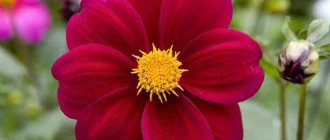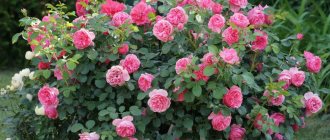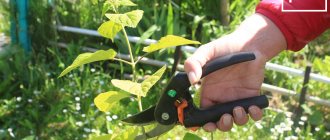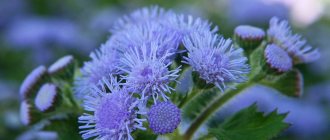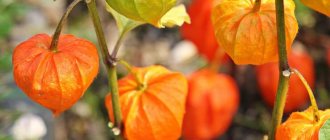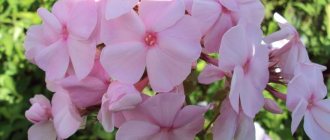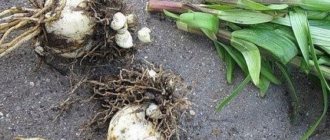Lush and festive flowers are often used in bouquets, but their beauty is fleeting and fleeting. But when you grow an outdoor shrub in your garden, you can admire it for a long time! Reproduction of this crop is possible: by layering, dividing the bush, cuttings, and also from seeds (but growing a crop with seeds is too complicated and unpromising). The decorative flowering perennial shrub is unpretentious to grow.
Interesting fact! The Latin name Hydrangea (hydrangea) literally translates as “vessel of water”, the name is associated with the plant’s moisture-loving nature.
Garden hydrangea: planting in open ground
Before planting a crop, it is necessary to evaluate the pros and cons, as well as analyze the climatic conditions and soil quality. The shrub grows well only in certain conditions, and does not please its owners with flowers in dry, sunny latitudes. The rhizome of this plant grows widely and requires space.
Garden hydrangea, planting in open ground:
- You cannot plant shrubs near bushes and plants whose roots require a lot of space. Please note that this is a moisture-loving crop, so it needs to be watered frequently. It is best to place the crop in places where it is possible to control the humidity level. That is why such plants are planted near ponds, or mulch is constantly added, which helps retain moisture near the roots.
- Water stagnation should not be allowed, as this will contribute to root rot. It is necessary that the place where the hydrangea grows is well lit, but there is no access to direct sunlight. It is best to place it in areas with diffuse sunlight or slightly shaded areas. It is worth placing the plant nearby near the house or gazebo, which is located near the river.
Bushes
RELATED MATERIALS
Hydrangea is spectacular both in single and group plantings. The main thing is that the soil is rich and...
2
Paniculata hydrangea is one of the most popular and beloved crops by gardeners. We specifically...
3
Tree hydrangea appeared in my garden unexpectedly - a neighbor gave me cuttings. After a couple...
Benefits of container gardening
Stable decorative effect. For container design...
3
We are used to planting summer flowers in flowerpots; with them, a veranda, patio or gazebo is certainly transformed. But …
2
20
Once on March 8th I was given an unusually beautiful bush of large-leaved hydrangea with bright...
When can you plant hydrangea in open ground?
The time of year when it is necessary to plant hydrangea in the soil depends on the climatic conditions of the area.
When can you plant hydrangea in open ground:
- It is best to plant in early spring, but this is appropriate in temperate regions where the soil warms up very quickly. In April, in central Russia, you can safely plant hydrangea.
- If you live in the northern regions, then it is best to wait a little and start planting the crop in May to avoid frost. At the initial stage, immediately after planting, the crop is sensitive to temperature changes and frosts.
- Some gardeners recommend planting in the fall, which is only appropriate if the region has a mild climate and fairly warm winters. Experts recommend planting hydrangea in the fall in the southern regions, near the sea. That is, this is the Krasnodar region. In other regions, in central Russia, it is best to plant in May or early June, when the threat of frost has completely passed.
Hydrangea
How to properly plant hydrangea in open ground?
Gardeners recommend planting the crop in the eastern sides, where there is sun early in the morning, and partial shade in the afternoon and at noon. These are ideal conditions for growing crops. It is necessary that the soil is drained, with an acidity no higher than 6. The ideal soil pH level is from 5.2 to 6.0. This is a slightly acidic environment in which the crop grows best. On alkaline soils, the plant quickly turns yellow and falls off, gives a very weak color and does not please the owner.
How to properly plant hydrangea in open ground:
- To plant, you need to dig a hole, the size of which should be approximately 50 by 50 cm. The depth of the hole should correspond to its width and length. If these are large varieties, then the pit should be larger. Its dimensions are 80 by 80 centimeters.
- Please note that before planting it is necessary to add fertilizer to the hole. It is necessary to pour the fertilizer into the prepared hole and fill it with three buckets of water. The indentation is left overnight. Thus, the soil will be well saturated with moisture, and the fertilizer will be absorbed into it.
- In the morning, you should add a nutrient mixture to the hole, which consists of soil, peat, humus and sand. The ratio should be 2:2:1:1. Sometimes it is recommended to add organic fertilizers along with mineral fertilizers. The ideal option would be a mixture of 25 g of urea, potassium sulfate and 65 g of superphosphate. Often, to increase the acidity of the soil, pine needles are used, which are poured into the hole.
Garden hydrangea
Conditional classification
In the existing assortment (usually foreign selection), varieties and hybrids of various types of hydrangea are conventionally classified according to the main characteristics: decorativeness of the bush and shoots; size and color of flowers and inflorescences, change in palette; flower shape; intensity and specificity of aroma; density of inflorescences; abundance and duration of flowering; winter hardiness; originality and plant habit.
When choosing varieties of the type you like, experts recommend paying attention to the structure of the inflorescences.
In the unusual inflorescences of Great Star paniculata, miniature fertile flowers alternate with a few sterile ones, each having 4 petals with a “wingspan” of up to 10 cm
Inflorescences consist of two types of flowers: large sterile (sterile) and small (fruitful, fertile). Moreover, the number and size of flowers vary over a wide range. Sometimes they are located chaotically in the inflorescence, but usually the fertile ones are located in the center, and the sterile ones surround them; such inflorescences are called viburnum-shaped, as in natural varieties, for example, in the tree-like hydrangea Radiata and large-leaved Normalis. The more sterile flowers, the more powerful, lush and dense “caps” of inflorescences, for example, in the paniculate varieties Vanille Fraise, Phantom and Limelight. In cases where fertile flowers predominate, they look graceful, airy and openwork - typical representatives of the “paniculates”: Brussels Lace, Kyushu and Unique.
The photo shows the Annabelle variety, which served as the initial form for the creation of most modern forms of tree hydrangea.
Information about the most common types of hydrangeas in Russia is shown in the table:
| View | Characteristic | Varieties and hybrids |
| Paniculata (H. Paniculata) | Trees (up to 10 m) or shrubs 2-3 m high with quickly lignifying brown shoots. They grow wild in Japan, China and southern Sakhalin. It can be cultivated in the form of a bush, single- or multi-stemmed tree. The leaves are oblong, opposite. Inflorescences are conical (10-35 cm long), round with a blunt apex or pyramidal in shape, consisting of a mixture of fertile and sterile flowers, first greenish and then white or cream in color. By autumn, in the sun, they turn pink, become brick-colored, pale purple and turn slightly green again. Unpretentious, frost and winter hardy (−25…−40 ℃). They can grow in one place for 40 years or more. | Amarine, Angels Blush, Brussels Lace, Butterfly, Grandiflora, Le Vasterival, Limelight, Harrys souvenir, Magical candle, Phantom, Pink Diamond, Pink Lady, Sundae Fraise, Vanille Fraise |
| Chereshkovaya (H. Petiolaris) | A tree-like vine with shoots up to 20 m long, aerial roots and large shield-shaped inflorescences consisting of white flowers. It is found on Sakhalin and the Kuril Islands in coniferous and mixed forests. Grown and used in landscape design similar to virgin grapes, well suited for vertical gardening | Miranda, Cordifolia, Silver Lining, Take a Chance, Winter Surprise |
| Treelike (H. Arborescens) | Shrubs native to North America, about 1-3 m high. The leaves are large, opposite, green on top and bluish below. Flat or spherical inflorescences with a diameter of 10-20 cm are formed on the tops of annual shoots. The flowers are greenish at first, but when fully bloomed, they are white or cream. Species forms have a large number of fertile flowers and a minimum of sterile ones. They begin flowering in the 4th-5th year. Unpretentious, shade-tolerant, quite winter-hardy. They can grow in one place for 50 years or more. | Annabelle, Bounty, Sterilis, Strong Annabelle, Hayes Starburst, Invincible Spirit, Bella Anna, Incrediball |
| Large-leaved (H. Macrophylla) | In its homeland in China, Japan and Sakhalin, it is a powerful shrub up to 4 m high. In garden culture, the plant is no higher than 1-2 m. Most modern varieties reach 0.4-0.6 m, suitable for growing in containers. The foliage is dense, bright green. Last year's shoots are woody, this year's shoots are herbaceous, and the next year's shoots become woody. Species and most varietal representatives bloom on last year's shoots. The inflorescences are varied in shape and color. There are “Japanese” with umbrella-shaped viburnum-shaped inflorescences (Normalis) and hemispherical ones (Mutabilis – “changeable”). The color of the flowers ranges from snow-white to dark red, blue and purple. Often there are “pink” and “blue” varieties that retain a tendency to change color depending on the chemical composition of the soil. To maintain the blue color of the petals, the soil is acidified, the plants are watered with solutions of aluminum-potassium alum or ferrous sulfate | Varietal series: Endless Summer, Forever& Ever, You & me, etc. |
Based on the species Normalis (pictured) and Mutabilis, numerous modern varieties and hybrids of large-leaved hydrangeas have been obtained
Planting hydrangea: distance between bushes
Many gardeners are interested in the question of how much distance should be left between hydrangea bushes during planting.
Planting hydrangea, distance between bushes:
- If it is a large-leaf crop, then the distance should be approximately 1.5 m.
- If this is a paniculate crop, then it is worth increasing the distance to 2.5 m.
- The bushes grow strongly and give lush color.
- Remember, if you are decorating a flower bed, it is best to maintain a distance of 3 m from planting other crops.
Near the house
How to plant hydrangea in open ground in summer?
You can plant hydrangea in the summer, which is recommended for plants with a closed root system. The main disadvantage is that a plant planted in summer requires more care than one planted in spring or autumn.
How to plant hydrangea in open ground in summer:
- The ideal time for planting is the first half of June. Don't expect any flowers to appear the first year. The first flowering will begin around the third year. If flower stalks form ahead of time, they must be cut off.
- This is necessary to strengthen the root system, stimulate the growth of the green part, and also improve the condition of the plant as a whole. After all, flowers significantly weaken the crop and can make it weak, which will lead to its death. In the summer, it is necessary to dig a hole with dimensions of 50 by 50 cm.
- It is better to make a recess in advance, about three weeks before planting. Add peat, soil, humus, and sand into the recess in a ratio of 2:2:1:1. It is necessary to install the seedlings in the recess, straighten the roots so as not to damage them. Cover the roots with soil and compact lightly.
- Be sure to pour in three buckets of water and mulch the soil. This will keep moisture inside. Under no circumstances should hydrangea be planted during flowering; such crops do not take root well. If there is such a need, you need to cut off the flower stalks and only then plant. Then the bush will take root well and will not waste energy on flowers.
Beautiful flowers
Reproduction methods
Cuttings
Propagating indoor hydrangea by cuttings is the simplest and most effective method of all. That is why this method of propagation is most popular among gardeners. The optimal time for cuttings is January or February. If you root the cuttings during this period, then next fall it will form a multi-stemmed bush consisting of three or four stems. If you plant the cuttings for rooting in March or April, then you will form a single-stem bush.
It is recommended to use root shoots to take cuttings. The length of the segment should be 70–80 mm, and it can have up to 3 internodes. Remove all leaf blades from the bottom of the cut. And the leaves in its upper part are shortened by ½ part if they are large, and by 1/3 if they are small.
The lower part of the segment is treated with a means that stimulates root growth. After which it is planted for rooting in a mixture of sand and peat. For rooting to be successful, the cuttings are placed in a well-lit place, the air humidity should be from 75 to 80%, and the temperature should be from 18 to 20 degrees. To maintain the necessary microclimate, the section is covered with a transparent cap (for example, a glass jar) on top. Do not forget to open the shelter for a while every day. Make sure that the soil mixture is always slightly moist. The cutting should give roots after 20–30 days. After this, it is planted in a permanent pot, reaching from 70 to 90 mm in diameter.
✅HYDRANGEA! REPRODUCTION BY CUTTINGS! Planting and rooting cuttings
Growing from seeds
If desired, hydrangea can be grown from seeds, and they should be sown in the last days of February. Take a bowl and fill it with a soil mixture of the following composition: peat, sand, humus, turf and leaf soil (1: 1: 2: 2: 2). Level the surface of the soil mixture, moisten it and evenly distribute hydrangea seeds, which are small in size, over it. There is no need to sprinkle the seeds on top with substrate. Cover the top of the crops with film or glass. Remember that crops need daily ventilation, as well as timely moistening from a spray bottle (the substrate should not dry out).
After the seedlings appear, the shelter must be completely removed. Picking into a deeper box is carried out only after the bushes have formed a pair of true leaf plates. In this case, the substrate is used the same as for sowing. Grown seedlings are transplanted into pots up to 70 mm in diameter.
Reproduction by dividing the bush
The fastest and easiest way to propagate hydrangea is by dividing the bush. However, in this case you need to act very carefully, and you will also need some skill. During spring transplantation, divide the bush into several parts. It should be taken into account that each division must have a growing point and well-developed roots. Shorten the stems and roots of the cuttings, after which they are planted in individual containers, while the surface of the substrate is covered with a layer of peat. If you divide the bush in the spring, then in the fall all its parts will take root well.
How is hydrangea planted in open ground in spring?
The ideal time to plant hydrangeas is spring. This time of year is most suitable for central Russia and its northern part. The best time is the end of April or the beginning of May. The landing sequence is slightly different. It is necessary to dig a hole with dimensions of 50 x 50 cm, add a mixture of soil, humus, peat and sand. During this period, a crop with an open root system is planted.
How to plant hydrangeas in open ground in spring:
- It is worth planting a plant with an open root system not in a depression, but by forming a hill from the nutrient mixture. The mixture is prepared from soil, peat, humus, and sand. It is necessary to form a small hill from the mass, place the plant on top, straighten the root system and sprinkle with soil.
- This must be done in such a way that the root collar is visible from the ground, about 4 cm. The elevation and partial exposure of the neck prevents the occurrence of rotting. In order for the plant to hold well, it must be compacted and watered with three buckets of water.
Near the house
Description
A very popular species is Pink Hydrangea, which was bred quite a long time ago. Initially, the variety was called Anabelya, but in Russia the name was changed.
This plant belongs to the deciduous shrubs. The roots of hydrangea are quite short, so they do not go deep, but remain close to the ground. Hydrangea has thin and twisted stems that are usually about 40 centimeters in height. The foliage has a dark shade of green, the individual leaf is small in size, slightly elongated and pointed on one side. Hydrangea flowers are small, mostly 15 millimeters wide, but due to the fact that inflorescences are formed from these flowers, the plant looks very beautiful and harmonious. The flowering period occurs in July and ends in October. The flowers have a sharp, pronounced aroma.
How to plant hydrangea in open ground in the fall?
In autumn, hydrangea is planted only if it has a well-developed root system. The maturity of the roots will protect the plant from freezing and speed up its adaptation to the new location.
How to plant hydrangea in open ground in the fall:
- For midland regions, it is better to choose September. If this is the southern part of Russia, you can perform manipulations in October. A hole measuring 50 by 50 cm is dug into which the soil mixture is added. Approximately 20 liters of water should be poured into the hole.
- During this period, it is best to plant plants by transshipment, so as not to damage the roots even slightly. To do this, the soil in the pot is pre-moistened and the bush is carefully removed along with a lump of soil.
- Next, you need to plant the plant and fill it with nutritious soil mixture. You need to leave about 3-4 cm so that the root collar does not rot. Water thoroughly, and only then apply mulch. It could be peat or pine needles. Please note that for maintenance it is necessary to constantly moisten the soil and mulch the soil in a timely manner.
Beautiful flowers
Diseases and pests
Hydrangea is quite resistant to attack by various pests, but, like other crops, it can be affected by diseases and parasitic insects.
Find out how to deal with hydrangea diseases and pests.
One of the most common plant diseases is powdery mildew. To eliminate this pathology, you should dilute Fundazol in water (20 g per 10 l) and irrigate the crop. A solution of Bordeaux mixture (80 g per 10 liters of water) is considered an effective remedy.
Aphids are a common pest of hydrangeas. A good counteraction is the use of garlic tincture. To do this, you need to pour 250 g of chopped spicy product into 10 liters of water. After standing for 48 hours, add 50 g of grated laundry soap to the resulting infusion. The components must be mixed thoroughly. Spraying is carried out once every 7 days until the pest disappears.
Hydrangea is a flowering bush that requires special attention when planting. Proper care of the crop is very important for the formation of a healthy plant, and includes regular watering, fertilizing, cutting, and preparing for wintering. If the gardener performs all the steps correctly, according to certain agrotechnical rules, then he will receive an attractive bush, densely decorated with flowers.
Planting hydrangea seedlings in open ground in spring: reviews
The plant needs pruning and preparation for the winter. This is a moisture-loving crop that does not tolerate heat. Hot areas with strong sunlight are not suitable for the plant. One watering requires spending approximately 25 liters of water. During the hot season, watering is carried out every week. The amount of liquid must be at least 20 liters.
Planting hydrangea seedlings in open ground in spring, reviews
Elena. I purchased a private house 5 years ago. It was not a very successful purchase, since the budget was limited. As a result, we had to work a lot to put the house in order and the small area around it. Three years ago I was landscaping the area and purchased several bushes. A neighbor decided to help me and gave me a small hydrangea seedling. I live in central Russia and did the landing in May. It was quite hot, so the plant began to wither and the leaves drooped. I had to install a small awning in this place, as well as arrange a recreation area. This created a shadow, and the hydrangea quickly came to its senses. To speed up adaptation in a new place, I watered it every week and applied fertilizer. The soil in my area is alkaline, I constantly have to increase its acidity. For this I use spruce needles and fertilizers.
Veronica . I’m not a big fan of gardening, but to get shade in the dacha, I planted hydrangea. This was not the best choice on my part, the plant does not like heat and needs to be watered often. There are no problems with water in the dacha community; I have my own well, but I don’t go to the dacha often. That is why we had to install drip irrigation to constantly moisten the soil. I mulched the area near the hydrangea with straw. It grows well, but produces small flowers. I think that the place is not the most suitable for her. I plan to buy a few more shrubs, but not hydrangeas, but hardy crops that respond well to direct sunlight.
Victor. I planted hydrangea at the dacha near our house 3 years ago. It grows well, I don’t experience any problems with it. I did everything according to the rules, specially preparing the mixture for good drainage. I water it often, last year it produced a lot of flowers and grew wider.
Near the house
A lot of interesting information about growing strawberries can be found on our website:
How to distinguish a female strawberry bush from a male one: the purpose of the definition, proper thinning of the bushes - tips for summer residents and gardeners
Lunar sowing calendar for gardeners and gardeners for 2020 in Ukraine - favorable days for sowing seeds, planting seedlings in the ground
The benefits of strawberries for children. At what age can you give your child strawberries?
Diseases of strawberries and garden strawberries, description of diseases, how strawberry diseases affect leaves and berries, treatment with chemicals and folk remedies
Growing strawberries and wild strawberries in PVC pipes vertically and horizontally with soil
It is worth using nutritious soil with high acidity. Therefore, if there are crops growing on the site that love alkaline soil, in no case rush to fertilize the hydrangea with ash or dolomite flour. After all, these fertilizers help reduce acidity and increase the alkalinity of the soil. The roots are located near the surface and grow sideways.
Subsequent cultivation and care
Even if planting is carried out in compliance with all the rules, hydrangeas must be provided with proper care in the future.
Therefore, to ensure that growing a bush does not cause any special problems, you need to:
- regulate soil moisture;
- apply fertilizers and mulch in a timely manner;
- perform pruning;
- organize preparations for winter.
You will be interested to know how to care for hydrangea in the summer.
Watering
Hydrangea is considered a moisture-loving crop. This means that the plant requires regular watering. Dry and hot areas are not suitable for this bush, since the plant will not have enough moisture, as a result of which it will develop poorly and may even die.
In favorable weather, the shrub should be watered once a decade with 15–25 liters of water. In hot weather, the frequency of the procedure increases - every 7 days, the amount of liquid - up to 20 liters.
Important! Hydrangea's winter hardiness decreases with a lack of moisture in the autumn. Therefore, if there is not enough rainfall at this time of year, you need to take care of regular watering.
The procedure is carried out in the morning or after sunset, pouring water into the tree trunk circle. After finishing watering, you can slightly loosen the soil 5 cm deep around the bush. To prevent rot, it is sometimes necessary to add potassium permanganate to the irrigation liquid (the solution should be pale pink, without crystals of the drug).
Fertilizer
If fertilizers were added to the planting hole during planting, then the plant will not need feeding for the next two years. The procedure is carried out in two stages: before the end of June you need to have time to apply “acidic” fertilizers (potassium sulfate), and from the second summer month until mid-autumn - potassium-phosphorus (superphosphate).
Adding the nutrients needed by hydrangea can be divided into three stages:
- Complex mineral fertilizers are incorporated into the soil in the first half of May (30 g per 10 liters of water). You can also add organic matter in the form of mullein infusion (1:10). Repeat the procedure after 1.5 weeks. Such feeding is necessary for growth.
- Potassium-phosphorus. Two weeks before flowering (the first half of June), it is necessary to apply liquid fertilizer: 70 g of superphosphate and 45 g of potassium sulfate, diluted in water. By watering the bush with such a mixture, you can ensure vigorous flowering.
- The above fertilizing is also recommended to be applied at the peak of flowering in order to prolong it and to ensure the formation of young buds.
Mulching
If the procedure in question was not carried out immediately after landing, then it can be carried out at another time. Mulch plays the role of protecting the root system from overheating and also inhibits the growth of weeds. The organic product is presented in the form of tree bark or peat (layer - 7 cm). Experts recommend adding pine needles, which will repel pests and also maintain the soil acidity necessary for the plant. The procedure is performed in May or autumn, before the onset of the first frost.
Pruning in autumn, spring, summer
All varieties of hydrangea tolerate pruning well.
This procedure is necessary for:
- maintaining the required shape of the bush;
- increasing decorativeness;
- health improvement;
- transformation into a standard plant.
Did you know? Buddhists believe that tea made from hydrangea leaves has magical powers. During the annual celebration of the birth of Buddha, people pour a drink on the statue of the newborn deity. And after the ceremony, believers drink flower tea with their families.
Spring haircuts usually take place in the first half of March (in the southern regions) or in mid-April (for cold regions of Russia). Each variety of hydrangea has certain features in pruning. For large-leaved varieties, partial pruning is recommended to maintain dense flowering in the summer.
Spring pruning can be done as follows:
- Remove old, deformed branches and dried flower stalks.
- Thinning is carried out until the buds open.
- Every 4 years - rejuvenating haircut (cutting all branches at right angles at a height of 45 cm from the earth's surface).
Features of spring haircut of paniculata hydrangea:
- The procedure is performed until the buds open.
- Remove old shrub fragments.
- Shorten all branches to 3–5 buds.
- All shoots that grow inward must be removed.
Tree hydrangea:
- The bushes do not need pruning for the first 3 years. Only sanitary pruning is allowed (if necessary).
- Subsequent full cutting involves the removal of old, damaged, diseased and weak shoots, and dry inflorescences.
- Young shoots are shortened to 3–5 buds.
- After 5–7 years, spring anti-aging pruning is carried out, shortening all branches and leaving stumps (up to 10 cm).
Autumn pruning of hydrangea is also considered a mandatory procedure. It is needed to divide the work of shaping and improving the bush. All old, damaged branches and branches growing inside the bush are removed, and young shoots remain untouched. The optimal time is mid-autumn. At this time, the air temperature should be +5...+10°C. For frost-resistant varieties, it is permissible to carry out the procedure in November.
In the northern regions, autumn pruning cannot be carried out for the first three years of cultivation, since the young plant does not have enough strength to survive the winter. Only sanitary cleaning is allowed if necessary. Summer pruning of hydrangea is also possible - this means sanitary pruning, as well as removing dry inflorescences. If the procedure was not performed in mid-July (or after flowering), it is recommended to postpone this procedure until next year.
Preparing for winter
The procedure is carried out in mid-October. It is necessary to protect young shoots from freezing.
The process is accompanied by the following actions:
- The plant is covered with soil and mulched with a mixture of manure and peat.
- The stems are bent to the earth's surface, covered with sawdust and dry leaves. A box with holes is placed on top.
- In April, the structure can be dismantled.
- It is recommended to tie large shrubs and place them under a frame shelter that is 10 cm larger than the size of the hydrangea, and fallen leaves can be placed inside as a thermal layer.
